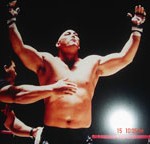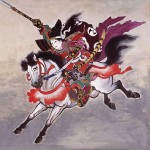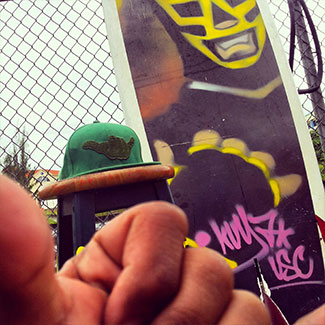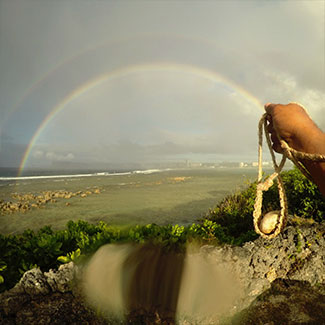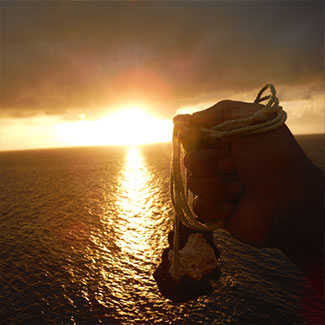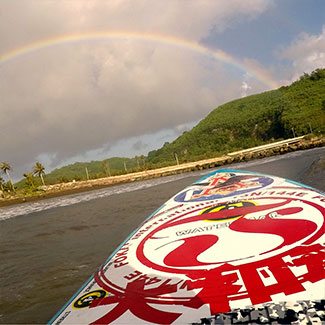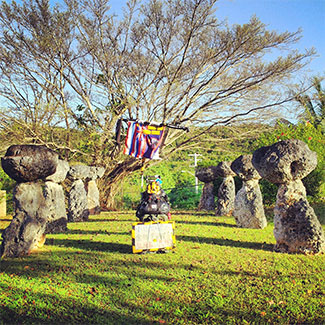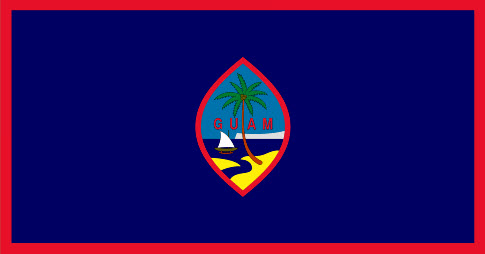EnsonInoue:Then&Now
February 28, 2012 by admin
Filed under 1008, CelebrityFokai, Familia, FokaiJapan
FromValeTudo Japan to the H.O.H…Bruh!
Familia:1008&66degrees
Much respect to Johnny H and the producers of 66degrees.
http://www.youtube.com/sixtysixdegrees
Johnny has been travelign the world the last 5years showing support and gaining quality footage to open a window into the ambitions of Guam’s multi-faced talent.
Expanding his efforts in everything from Mixed Martial Arts to cultural preservation–Mariana Islands number one video library in the 21st century is definitely enroute to true fruition. Keep the good stuff coming Johnny. thanks for your support. Were hearing you loud and clear.
Respect…sinceeversince
TheFokaiOhanaW/CrazyMike
February 5, 2012 by admin
Filed under BJJ Stuff, Familia, FokaiCombatUNit, FokaiHawaii
small window into a very large thing with TeamLloydIrvin and the FokaiFamilia’s CrazyMike Fowler and his growing efforts to enhance lives in sharinjg the gentle yet extremely effective art of Jiujitsu
AWindowintotheWreckShop:
Words of wisdom from the Monday Wednesday Friday evening shift @FokaiCentral
FokaiSoCalProject:PurebredUnd1sputed
January 13, 2012 by admin
Filed under Familia, FokaiCombatUNit, SoCalProject
This is Fokai’sSan Diego home for MMA and cultivation. a brotherhood of all sorts–this has been the engine used to help fuel, drive, and direct a multitude of Guam fighter athletes towards real results. PurebredUnd1sputed is also home to our extended friends and family on the WestCoast.
GoodVibrations for sure.
RealFighters:PugilisticOffensiveWarriorTactics
January 13, 2012 by admin
Filed under Familia, Onra, SoCalProject, Special Forces
PugilisticOffenseiveWarriorTactics
Using intrinsic motivation and the battle buddy model to motivatie and empower todays Combat Veteran.
FokaiFamilia&FokaiFemme:MariaDunn
November 15, 2011 by admin
Filed under Familia, FokaiFemme
Maria Dunn, 25, arrived in Wigan in September from the island of Guam intent on “honing her skills and getting in shape for her qualifiers in early 2012”.
What she hadn’t expected was to be trained in Freestyle Wrestling by a coach with direct roots to the forerunner of her Olympic discipline – Catch-as-Catch-Can Wrestling.
Maria said: “I wasn’t looking for it, I didn’t know what I was looking for. I came here looking to train and qualify and get into the best shape of my life. It’s just by pure chance that I have found the best wrestling coach who has a whole different world of information.
“There are moves I have never ever seen before – I’m learning all the time.”
Wigan Leisure and Culture Trust (WLCT) invited Maria to stay in Wigan for her pre-Olympic training, opening up the borough’s public gyms for her use and teaming her up with world renowned coach Roy Wood from Aspull Olympic Wrestling Club, the club also known around the world as The Snake Pit.
Mike Lyons, Head of Service for Sport and Leisure for WLCT, said: “We’re delighted to have Maria here. Roy is a world class coach and we’ll do everything we can to help her fulfil her potential.”
Roy, now 68, trained under legendary wrestler Billy Riley who mastered the art of “Catch-as-Catch-Can Wrestling” or “submission wrestling”. Lancashire Catch-as-Catch-Can Wrestling first came to prominence as an amateur sport practiced by coal miners, gaining popularity in the late 19th century.
Freestyle Wrestling which Maria hopes to win a medal at in London 2012 is a descendent of “Catch-as-Catch-Can” and, although the rules may be different, Maria is hoping an insight from those early days could be a major factor in her Olympic ambitions.
Maria said: “I feel really positive, mainly because of this opportunity here in Wigan.
“Roy is coaching me Freestyle Wrestling but because his understanding of the sport is much deeper I am learning all the time. There are little bits here and there that I have never seen before, that nobody would ever expect, and usually a move that is something out of the ordinary allows you to win.
“There are things I can draw from by learning this Lancastrian style made famous by Billy Riley that I think can give me the edge.”
Roy added: “We are delighted to have Maria training with us. She is a pleasure to coach and is refreshing in her open-minded attitude towards Catch-as-Catch-Can Wrestling thus improving her freestyle performance.
“I have always known the value of Catch-as-Catch-Can Wrestling, as both a sport in its own right and one that compliments other disciplines. This is reflected in the global interest that we have seen developing recently with the rising popularity of Mixed Martial Arts.
“I look forward to watching Maria’s progress and feel that she will ultimately have the upper advantage on two levels. Firstly, the extreme level of fitness required by Catch-as-Catch-Can Wrestling to which Maria works on daily. Secondly, the appliance of the Catch-as-Catch-Can rule-compliant techniques that compliments her developing freestyle skills.
“Whether coaching freestyle or catch-as-catch-can, my passion has always been about passing on my knowledge to others which follows on from my own learning from Billy Riley. Ultimately, ensuring that such historical disciplined sports are not lost in the text books of history.”
Factfile about Maria
- Guam is part of the Mariana Islands that extend 1,565 miles from Guam to near Japan
- Guam is 7,000 miles from Wigan
- Maria started wrestling when she was 11-years-old in PE class. She watched for two weeks because she was too young to join in, pretending to her mum that she was actually at football class. The coach gave in after two weeks started training and had first competition.
- As the only female wrestler at high school she had to wrestle with the “guys” to practice.
- She went on to study at Missouri Valley College, America and admits that “wrestling boys in Guam certainly helped to put me on the same level”.
- Following college she went on to become an Art Major after studying at the University of Guam.
- Maria competed in the 2008 Olympics. She was the first female wrestling Olympian her country has produced.
- Anyone wishing to find out more about Roy Wood, catch wrestling or The Snake Pit should visit www.snakepitwigan.com
sinceeversince:BJPenn&FokaiDamashii.com
November 13, 2011 by admin
Filed under CelebrityFokai, Familia, FokaiHawaii, Special Forces
via FuryMadness A.K.A:RichardChou
BJ Penn will be taking on the legendary Renzo Gracie on July 29th at the Aloha Stadium as the main event of the K-1 World Grand Prix. We caught up with The Champ recently at his training camp in Hilo. Here’s what he had to say…
Did you ever think you’d be fighting Renzo Gracie?
I never thought I’d be fighting him in my whole life.
It’s gonna happen though and after this I’m gonna retire………. psyche!!!! I’m gonna take a break after this one though, probably take 6 months off and just train hard. I’m gonna hone my skills and get ready to fight again in December hopefully.
What are your thoughts on Renzo?
Legendary fighter who’s been around for a while. I remember him fighting back in the day when I was 16 years old. When I was a kid I NEVER thought I’d be going into a fight with him and him being the underdog.
What’s the training like for this one?
Good training actually. Very tough training. I’m training with Charuto, Allan Goes, wrestler Joe Clark, my stand up coach Rudy Valentino, and my same team down here in Hilo. We’ve got some new blood in so they’re keeping me on my toes. I feel good, this is just another fight, this is strictly business, just ready to do my thing. I’m not trying to prove anything extra but going in there to finish. I don’t want to make it a long drawn out fight. I’m gonna go right after him from the bell.
Are you disappointed this is not in the cage?
No,I like the ring too, it’s all the same.
How do you feel about the opportunity to be the main event for the first event ever at the Aloha Stadium?
It’s unbelievable man. Unf#$%ing believable.
Is this the biggest fight of your career?
Good question. I don”t know. I wonder if people think that. I don’t know.
Okay, how about this one: is this the biggest fight in BJJ history?
That’s a good question too. This just might be the most important Jiu Jitsu fight ever. One of the toughest, hard nosed Gracie fighters against the only American to win a world championship. Man, you just pumped me up!! You just got me ready for this fight. This is the biggest fight in Jiu Jitsu history.
Are you the new Gracie Killer?
Absolutely not. I know people will go around saying it but I don’t look at it like that. If Ralph or other people in his family are disappointed that I’m fighting Renzo there is nothing I can do. I’m not a kid anymore, I’m a man. Whatever happens, happens. I’m just there to do my job.
What’s the game plan?
Go right in. Be relentless and in the end he will be traumatized. Don’t stop from the first minute and go, go, go. Don’t stop till your face hits the ropes. Fists flying, feet flying, people flying.
Let’s switch gears for a hot minute. What are your thoughts on a Hughes rematch?
I think it would be one of the biggest fights in the sport today. It could have been the biggest fight in the world if we were fighting on TUF season 2 but now they’re going to have the 102nd biggest fight in the world with Franklin vs. Hughes. The Hughes rematch is gonna be a big one when it happens, if it’s promoted correctly.
Your thoughts on MMA today?
MMA is on it’s way. It’s still in it’s infancy. The more new people who will be watching TUF, that’s the first exposure they will have to MMA and fighters. Those guys are going to be big names. After a while people will get used to the sport and start wondering who are the best guys out there really are. Just like in boxing. The De La Hoya’s the Mayweathers. Where are all these guys? Once everybody starts finding out who the best guys are, once the casual fan starts watching the best guys in Pride, K-1, UFC, Rumble, etc. and then starts recognizing them, that’s when the sport is going to get big. Then I think it’ll just blow up from there.
Who inspires you?
Rickson Gracie, Chad Hao, I don’t know. I don’t even know why I fight anymore. I do it because everything else is just boring I guess. Nothing else to do. Partying is boring already. Seriously though, I’m still excited about fighting and bringing in new training partners so things don’t get stale. I never even thought I’d be UFC champion. I was just fighting for fun. It’s the only thing that gets me excited. I’m not trying to put any fighters down because there is always a fighter who you can meet your match with, but I just like being involved with big fights. I mean people will say this Renzo fight means nothing but how can it mean nothing if 20,000 people are sitting there watching? You know it means something. High energy, high intensity, it’s exciting. It’s the kind of stuff I wanna be involved with. The 2 best fighters in the world could fight in a closet and nobody finds out and it won’t mean s**t. It’s all about having the people watch an exciting fight.
Tell me what you think about a few big names in MMA.
Let’s start with Matt Hughes. Infidel. He doesn’t believe in me.
Vanderlei Silva.
A great champion.
Fedor.
My favorite.
Why is he your favorite?
Everything about him. He’s relentless, hits hard, he’s strong, throws guys around. Kicks eveybody’s ass.
Kind of like you huh? A bigger version of you?
Ha ha! I don’t know?!
If you were 250 pounds, would you be Fedor?
I’d be Fedor ………with bricks!! LOL!!
We heard your entrance for this fight is going to be nuts, can you tell us about it?
It’s supposed to be awesome, hopefully we don’t mess it up. You’re just gonna have to wait for it………
Message to the fans and haters?
To all the fans, thanks for the support, to all the haters my greatest support has come from within and that’s the way it will always be.
Any words for Renzo?
See you on July 29th. Be ready. Be ready.
sinceeversince:MayhemMiller&fokaidamashii.com
I HEART Hawaii- A good blog I wrote for FokaiDamashii.com
Recently, a friend of mine at Fokai had asked me to do a write up on why I love Hawaii so much, and after chewing on it for a few days, I think I’m ready to spit it out on this piece of paper- wait, no, the keyboard only because I have the handwriting of a ten year old that was raised by koala bears. You’d think being the Uber-hoale that I am, that I couldn’t get past the high humidity, which causes a condition commonly called swamp-ass. Swamp-ass requires those afflicted to use multiple wipes per day, just to stop from making a splash when you sit down, that is if you forgot to baby powder the boys that morning. If for some reason you decide you are just way to cool to visit the bathroom and wipe, you may not wanna walk around too much, or you will become victim to the dreaded “monkey butt”. It’s not as fun as it sounds. Your walking rubs the butt cheeks until they are beet red, just like a baboon. I’m also not the best surfer, the damn lifeguards keep swimming out to save me, and they always end up touching my sunburn.
All that aside, Hawaii has an undeniably special place in my heart. The laid back nature gives Hawaii a lot of it’s character, it’s a lot slower than LA, but a lot smarter than Vegas, that’s for damn sure. Most dumb rednecks don’t even know that Hawaii is part of the United States. What the hell? I guess because they don’t have a NASCAR track out that way.
Sometimes when I’m kickin it there after a fight, I’ll be sweating like a faucet so I’ll grab a shave ice. No I didn’t mean “shaved” ice, I said shave ice. We’re cruisin’ brah, why we gotta say da kine “s”? The time to use the “s” is when you are getting rid of a bunch of words- “The Ocean Club” becomes “Ocean’s”. Are you getting a lesson yet haole? Yes haole, the best word ever. I know it’s supposed to be “foreigner” but we all know it means honkey, which is cool with me, since I’ve become Hawaii’s “Haole Boy” that can scrap. They always have smoothie shops right next to coffee shops, which is terrible for me because I could just run back and forth all damn day and eventually I’d only be able to fight Akebono, especially if I get a hold of those oatcakes… yuuuuum oatcakes. I could eat those all day. Actually if I was stuck on an island, oh wait, okay if I was stuck on Hawaii, I probably could survive on those for at least 6 years and 30 days. Unless I found a knife and started hunting pigs in the jungle. Okay, let me get back on the subject. Uh, damn what was it, oh yea, Hawaii.
I love watching the tourists be tourists in “Wikes” (Waikiki-the tourist area). The beach are with the statue of Duke Kamamamkakakmamakaeeohee, complete with a fountain underneath so he is forever riding the wave. That’s not his real last name, but he was the original Big Kahuna, and he knows what’s up. People come down to the beaches from all over the world, so it’s not rare to see some hairy chest-ed Europeans playing soccer in their plum-smugglers. Also there is always some poor pasty 8 year old kid from Germany or London or something who has never seen the sun before, and doesn’t know what the hell sunscreen is, frying to a crisp, so that the skin peels off of his nose straight down to the bone.
THE FOOD. I already mentioned my fondness for oatcakes earlier, but I could probably write a whole flippin article on the food. There are some BIG people in Hawaii, and I know why, they have the best fat-faced-fried-in-the-pan delicacies a young country boy could ask for. SPAM MUSUBI! All of Hawaii is Spam-tastic, meaning they eat the tasty canned meat for breakfast lunch and dinner, so when in Rome.. EAT EVERYTHING. They take a piece of seaweed, and wrap it around some rice and of course, the nectar of the gods, Spam. My favorite place to pick up this fat little fritter is 7-11 yes the convenience store. Sure they have probably been sitting there for the whole week, but are you going to argue with the salty tastiness that is Spam? Since I’m in the store anyway, I tell the cashier “Hey Auntie, toss me a manapua!” which is a doughy lil delicacy that has either a pork or sweet potato, no PURPLE sweet potato filling- my favorite. I’m glad I don’t eat like this all the time, because they’d have to wheel me to the ring.
One of the best parts about the island is the fact that it’s teeming with life, and not just all the hot women, wait, was that a woman behind Safeway? Never mind, if you drive out to Kaneohee- I think that’s how you spell it, it’s on the side of the island that it rains more, because god hates those people, but he doesn’t hate them that much because he gave them THE SANDBAR! First, picture the happiest place on earth, and now multiply it by quabillions. Only then will you understand the beauty that is standing in the middle of the ocean in knee-deep water. There are like turtles, stingrays and things I’d never seen on TV swimming by merrily, I think a bluebird landed on my shoulder, and I think a dolphin popped out of the water and winked at me. Guys bring grills that stab into the ground, and everyone tailgates, or boatgates, or propellergates, or whatever you wanna call it. Plus you haven’t lived until you’ve been dragged behind a boat on a rickety intertube, at 60 miles an hour. Actually you haven’t laughed, until you’ve seen a pro-fighter with platinum teeth being dragged behind a boat and swallowing a gallon of seawater. The homeboys at Brit’s Autobody Shop hooked up that great (?) experience, after Brit himself took me on a speedboat that went about 100 miles per hour, courtesy of some moke dude that thought it was cool to see the Super Brawl Champion cling onto the side of the boat like a Japanese schoolgirl on the tilt-a-whirl.
Yes I must say, there isn’t much that I do not like about Hawaii. I mean, Oprah comes on twice a day, and rainbows aren’t gay, they’re just cool to look at. Every time I teach a seminar, the people are so cool and easy-going, that I forget these people used to boo me and yell “Die haole!”. Yes, from the dance floors- where you can see two 5’5” Vietnamese twins pop-locking, right next to an equally short and enthusiastic Englishman with a pager on his belt doing the double fist-pump to the beat of the trance music, all the way down to the north shore where you can see somebody moon-walking on a wave as big as a house, Hawaii is the best. Not to mention this is where the shaka was born, and everyone knows your just cruisin’ if you chuck a shaka in their direction- even if you just cut them off on the H-1. Aloha, and Mahalo for reading the whole damn thing.
Jason Mayhem Miller
- 7:54 AM
Comments
Post a comment…
Warrior’sSacrifice:TheEnsonInoueStory
November 4, 2011 by admin
Filed under Familia, FokaiCombatUNit, Special Forces
November 1, 2011, 11:03 am
BY EVAN ROSSER
Sportsnet magazine
Enson Inoue is in the passenger seat of a truck driven by his friend Jin Watanabe as it picks its way through the empty streets of the 20-km evacuation zone surrounding the damaged Fukushima Daiichi Nuclear Power Plant. It’s late August 2011, less than six months after the Tohoku earthquake and tsunami shattered, razed and extinguished the northeast coast of Japan, killing more than 15,000 people and displacing hundreds of thousands. With the help of Watanabe, a contractor working inside the zone, and a fake security pass, Inoue is on his second trip in.
As their truck makes its way deeper into the evacuated area, past blasted homes, vacant parks and cleaned-out stores, the only visible sign of life is the occasional cat or dog, left behind by its owners, scavenging by the side of the road. The truck pulls to a stop for each one and Inoue climbs out and retrieves a bucket from the back. It contains a slop made from a mixture of wet and dry dog food that he portions out over the course of the day. The cats eat it without objection; the dogs with undisguised joy. These animals are the reason Inoue is risking his health to return to one of the most desolate and irradiated places on earth. The last time he came, he had no food for them. It made him feel empty.
The abandoned animals of Fukushima are part of a larger mission Inoue has undertaken to bring aid and support to the victims of the Tohoku disaster. It’s a cause that has required him to put his life at risk, but Inoue has always shown alacrity in that regard. As one of the most exciting and respected mixed martial artists of his generation, he was celebrated for his willingness to die fighting. When he was young, this need to test his own limits was expressed in a senseless readiness to kill or be killed in the street, but once focused in the ring, it earned Inoue the title Yamato-damashii, a term that is often used to describe warriors, and for better or worse, Inoue has always been a warrior. There was a time when losing his life in the ring would have been the final proof of his honour and manhood. But in the north of Japan, helping the displaced rebuild their lives, Inoue has finally found something truly worth the sacrifice.
• • •
Though he managed to get himself in a consistent string of street fights from middle school onwards, Inoue didn’t become a real fighter until he was 27. Born in Honolulu in 1967 to schoolteachers Errol and Evangeline, his first sport was racquetball. He lasted two years on the professional tour before moving to Japan in 1990 to fill in for his older brother, Egan, at an amateur tournament. After deciding to stay in the country, he won four straight national championships. Then he walked away from the sport, and dedicated himself to something entirely different.
In late July 1994, Inoue attended the first Vale Tudo Japan—a mixed martial arts tournament that ran annually until 1999. He was there to watch Rickson Gracie fight. Inoue had spent a year training in Brazilian jiu-jitsu under Rickson’s brother Relson while taking courses at the University of Hawaii. He had always considered martial arts to be a hobby, but as he watched Rickson in the ring, something changed. “When I saw him fight,” Inoue explains, “the anxiety that I felt was far greater than at any racquetball tournament I ever played—just watching him fight.” Before Gracie’s match was over, Inoue knew he had to feel what it was like to be in the ring. Even if the fear completely overwhelmed him, he had to know whether he could endure it.
He called every MMA organization in Japan, but most had strict admission requirements. The only organization willing to give him a shot, Inoue says, was Shooto. Told to “come on down to the gym and spar,” Inoue jumped at the opportunity. With ex–pro wrestler and Shooto founder Satoru Sayama looking on, he was put in the ring with Yuki Nakai, a fighter with a 5-1 professional record. “I out-positioned him, mounted him, got his back, did everything to him,” Inoue recalls. The display was striking enough to earn him a fight on the spot. “I didn’t care if it was amateur or pro, small ring or big ring,” he says. “I wanted to feel hand-to-hand combat, man-to-man—the jitters.” Though he was only interested in testing himself in a single fight, the match Inoue agreed to was his professional debut. He had three months to prepare.
• • •
The last time Inoue had fought on three months’ training, the circumstances were a little different. It was 1989, and he had tagged along with Egan to the U.S. national racquetball championships in Seattle, Wash. Late one night, the brothers and a friend were driving around taking in the city. Stopped at a set of lights, they struck up a conversation with a car full of girls and got themselves invited to a nearby club. When the light flicked green and the girls made a left turn, they followed suit from the centre lane and were hit by a third car.
Special magazine trial offer: Sign up for four FREE issues of Sportsnet magazine and get a discounted price on a subscription. Satisfaction guaranteed. Order now!
As the three collected themselves and got out to check on the other car, its driver was already heading their way, yelling colourful promises to do to them roughly what had been done to his vehicle. “We were getting attacked by this guy who was the size of all of us put together,” remembers Egan, who had extensive martial arts training. “I looked at this guy and thought, ‘I don’t know if I could hurt him hitting him.’” As Egan ran to a pay phone to call the police, Inoue, who had only been training at Relson Gracie’s gym for three months, followed his instincts in the only direction they ever led—straight into conflict.
The man jabbed his fingers into Inoue’s chest, spitting curses. Inoue told the man to calm down and wait for the police, but inside he was already bristling. When the driver poked him for a third time, he let himself go.
Taking the larger man’s outstretched arm in both hands, Inoue turned and wrenched it forward and down, bringing the driver over his hip and sharply to the ground. They struggled on the asphalt, Inoue landing a series of punches to the man’s face, head and throat that had no discernible effect. With Inoue on top of him the driver rolled onto his stomach and attempted to stand. Inoue slipped an arm over the man’s shoulder and wrapped it around his neck, choking him from behind with his forearm. The man launched himself backwards, crashing to the ground and pinning Inoue beneath him. He clawed at Inoue’s eyes, fighting for air. Soon, he was unconscious.
Worried the big man would get back up, the trio fled. The jiu-jitsu had worked, Inoue realized in a rush of excitement, but as they drove away he could see the man’s body in the rear-view mirror, still unmoving. He stopped worrying about the man getting back up and for the first time started worrying that he wouldn’t. He spent the next day scanning the papers with Egan, looking for mention of the incident. They didn’t find any.
• • •
When Inoue first appeared on the Japanese MMA scene six years after the Seattle incident, Brazilian jiu-jitsu was “the art of arts,” says legendary mixed martial artist John Lewis, who eventually gave Inoue his black belt in the discipline. Inoue’s arrival coincided with the rise of Royce Gracie in the UFC. As Gracie put the true potential of Brazilian jiu-jitsu on display, dominating a long line of larger fighters from a wide range of martial arts backgrounds, fight fans and insiders in North America began to take notice. Largely cut off from that world, however, Japanese fighters were much slower to make the transition to jiu-jitsu-based grappling. “Shoot wrestling [the backbone of the Shooto organization] had nothing to do with ground positioning,” Inoue explains. “It was all about submissions.” It wouldn’t take him long to show them the value of striking on the ground. Inoue still had very little training beyond his single year with the Gracies in Hawaii. In the lead-up to his first fight in January 1995, his opponent, fellow first-time pro Shingo Shigeta, couldn’t see past Inoue’s limited martial arts background. Loud, cocky and crowing, he predicted an easy victory. The implication that Inoue would go down without a fight was, in Inoue’s view, the gravest of insults. “He got Enson into that mode that Enson was going to kill the guy,” Egan recalls. “It would have happened, too, if there was no ref.” The 70 seconds of unabated ass-kicking Inoue unleashed on his opponent to earn his first victory by TKO comprised the full extent of Shigeta’s professional career. He never set foot in the ring again.
A lightly promoted undercard, that first fight shouldn’t have drawn much attention. Instead, says Inoue, there was a full-page write up on the big American “monster of Japanese descent that knows Gracie jiu-jitsu.” Inoue was flattered. He felt the coverage obligated him to fight at least once more. The same sense of responsibility carried him through his first four professional fights—all victories.
The fourth—against four-time world kick-boxing champion, Andre Mannaart—was a turning point. “When I took [Mannaart] down and beat him, it kind of rang bells in my head like, ‘Wait a minute, maybe I am good at this,’” says Inoue. “I changed my whole thinking and went full-time into training.”
• • •
On his back in full guard on a canvas mat Pollocked with blood from an earlier fight, Enson Inoue takes a few seconds to think, with Randy Couture’s forearm pressing down on his neck. It’s October 1998, moments into the first round of a fight Inoue is expected to lose. He has spent less than 20 seconds on his feet, but has yet to take any real punishment. The fighter’s instincts he’s always had remain, but years of technical training have refined them into an art.
Couture releases the pressure from Enson’s throat and gets both hands up by his head, feeling around, searching for a way to inflict enough pain to slip Inoue’s guard. Leaving his head unprotected, Inoue manoeuvres himself sideways underneath his opponent. Then he waits to get punched in the face.
It doesn’t take long. Couture plants his off-arm on the mat and drives his left fist into the right side of Inoue’s face. Inoue is already in motion when he gets hit, wrapping himself around Couture’s right arm. Taking the wrist in both hands, he pulls Couture’s arm straight and then past straight, bending it back at the elbow and sending nauseating waves of pain up to Couture’s shoulder. The tapping on Inoue’s leg comes fast and urgent. The fight is over a minute and 39 seconds after it began.
Couture—the future UFC Hall of Famer, undefeated at that point and fresh off his first heavyweight title—is the most famous, and maybe the most skilled, fighter Enson Inoue ever beat, and for that reason those 99 seconds on the mat have been held up as the pinnacle of Inoue’s martial arts career. But it’s the way he beat Couture that hints at the kind of fighter Inoue was, and the kind of man he remains—using his face as bait, risking injury and defeat to create the opportunity necessary to win. In that moment, Inoue displayed a central tenet of Yamato-damashii—total indifference to one’s physical well-being in the name of a higher purpose.
It’s a wilful disregard for his own safety Inoue seems to have been born with. When they were children, Egan decided early on he would rather go to elaborate lengths to avoid a confrontation than fight his brother. Older by two years, he was never worried about being hurt, but the beating he had to lay on Enson to finish the fight was more severe than anything he was willing to inflict on his own flesh and blood. “With Enson I think it’s more than just stubbornness,” he says. “It’s really that samurai, willing to die for his cause.”
• • •
Inoue’s fearlessness in the ring struck a particular chord with the Yakuza—Japanese organized crime. According to him, it’s common for Japanese martial artists to be approached by members of the Yakuza after a match. “With my status as a famous MMA fighter, it’s understood that I would have connections,” Inoue explains. “But my reputation went a little further than that as far as mingling with them and becoming very good friends with a lot of them.”
Since his retirement from active fighting in 2004, Inoue’s continued popularity in the Japanese underworld has allowed him to make most of his living by attending and occasionally judging Yakuza-run underground fighting events. He is particularly useful for defusing the frequent riots that break out when the crowd disagrees with what takes place in the ring.
Scheduled to attend an underground fight in Tokyo at the end of March, Inoue was at his home in Saitama, a short drive north of the capital, when the Tohoku earthquake hit. Unhurt and with his house largely undamaged, he fled south to Kyoto after a friend in the military told him of the leak at the Fukushima plant.
In Kyoto, he learned that the Tokyo fight was off. Its organizers had all gone north to take supplies and assistance to the disaster area. “They were there before the army,” Inoue says.
He was floored. “I sat there thinking, ‘Oh my God, I just ran the other way.’” The shame of having fled came first, but the persistent thought that he was meant to help the victims was harder to get out of his head. “I knew that I had to go up there,” he says. He filled his truck—a black Hummer—with water, rice and other basic necessities. Two weeks after the earthquake and tsunami hit, alone and with no clear idea of the extent of the danger and devastation he would face, Inoue drove to the aid of the people of Tohoku.
The traffic thinned as he headed north. Eventually, the only other vehicles he encountered were military trucks ferrying groups of soldiers. For the most part, the roads had been cleared of heavy debris and were navigable. The military had made that top priority—ahead of clearing the dead. “I felt like I was driving through a movie,” Inoue recalls. “There were still bodies in the trees, there were bodies floating in the water.” At one point, driving past a gas station, he noticed a body draped on the edge of the roof above the pumps. It was easily 20 feet from the ground. The buoyancy and purpose he’d felt knowing he was on his way to help people in need quickly faded. “I had a reality check,” Inoue says.
Even more shocking than the remains of the dead was what was left of the places where they had once lived. In many areas, rubble was piled as high as two storeys on either side of the road. Where entire neighbourhoods and towns had once stood, there was nothing. The force it must have taken to level and sweep away so much humanity was mind numbing; the fear that must have been experienced by the people caught in its path was unimaginable. Inoue drove on in silent disbelief.
He had been asked to check on Futoshi Hatakeyama, a friend of a friend who lived in the coastal city of Miyako in Iwate prefecture. Arriving at Hatakeyama’s home, he found it in near-ruins. He offered to help clean up, repair or rebuild in any way he could, but he was politely refused. His offers of food and water were also turned down. “Honestly,” Hatakeyama said, “it’s better if you drop it off at the evacuation centres. They’re in much more need.”
At the nearest centre, Inoue was directed to a building across the street where volunteer workers unloaded his truck. Exhausted and emotionally drained after days in transit, he watched the entirety of his cargo disappear in 10 minutes. Instead of feeling satisfied, he felt nothing. “The food and water was gone and I didn’t personally give it to a single person,” Inoue recalls.
“That’s it?” he asked, turning to Hatakeyama, who had guided him to the centre. “We’re not going to see them give it to the people? See the people drinking the water?” Hatakeyama offered to take Inoue to a smaller evacuation centre. His family was living there and he told Inoue they would be able to walk through.
Inside, Inoue instantly felt like a trespasser, one of the unaffected, there to observe the misery of people who had lost everything. Keeping quiet, he did his best to figure out which supplies the centre most desperately needed. He settled on hand soap and water. Then he left.
With the condition of the roads, it was a three-and-a-half-hour drive to the closest town that had enough soap and water to fill Inoue’s truck. He made the trip that night and returned the next day. People continued to keep their distance and he was unsure how they felt about him. “There was this old man who came up to me and said, ‘Do you have any cigarettes?’” remembers Inoue. He didn’t, but promised to come back the next day with a few cartons. That night, he again made the seven-hour round trip, returning the following morning with the smokes. “I got mobbed by the people,” Inoue says. “That kind of broke the ice.”
Curiosity is Inoue’s greatest enemy in the north. It pulls him away from the relative safety of the evacuation centres and out into the eroded remains of hospitals, stores and banquet halls, where the air is laced with asbestos and even a small aftershock could cause any of the already-damaged structures to collapse in on him. And despite reported levels of radiation high enough to render stretches of the area uninhabitable for decades, curiosity is also what first lured him into the Fukushima Daiichi nuclear evacuation zone.
“The public had become skeptical about the government’s report on the radiation issue,” says Jin Watanabe, speaking through a translator. “Enson wanted to find out the truth, in his own way.” Inoue’s “own way” involved convincing Watanabe to sneak him through a security checkpoint. Had they been caught, then or at any time while in the zone, Inoue would have faced imprisonment and deportation.
For that first trip in, he took a dosimeter—a device that measures absorbed doses of radiation—but couldn’t get his hands on a proper radiation suit. Instead, he wore a rain jacket over his clothes. Unable to see or feel the radiation—which, in the aftermath of the disaster, had been measured at levels high enough to change blood chemistry in an 80-km radius around the plant—both men experienced it as an ever-present sense of unease. Deciding they were safer in motion, Watanabe refused to stop the truck. They drove around, Inoue becoming increasingly distressed at the sight of all the stray animals, until Watanabe could no longer handle the strain. Then they left.
In the seven months since his first trip, Inoue has returned to the Tohoku region 10 more times, staying anywhere from three to 10 days per trip. He has visited as many as 12 different evacuation centres and delivered tens of thousands of dollars worth of food, clothing and diversions, ranging from ice cream to books to bottles of wine. Divorced since 2004, Inoue’s only tie to the house in Saitama is a small zoo’s worth of exotic pets. When he began his missions in March, he had to pay as much as $700 a trip to board a pair of monkeys and an albino garden snake. It hasn’t been as hard to talk friends into feeding his piranhas and turtle.
Initially funding everything out of his own pocket, Inoue has converted a pre-existing business—handmade bracelets he sells online under the name Destiny Forever—into a charitable venture in order to afford the missions. He’s currently planning his next trip for the middle of November.
• • •
For the time being, Tohoku is about as far as Inoue can go. On Oct. 18, 2008, he was sitting in a parked car when two police officers approached and asked to search the vehicle. They turned up nearly 17 grams of marijuana secreted in the sunroof, door compartments and on Inoue’s person. Never able to sleep more than three or four hours a night, Inoue turned to weed a few years after retiring from the ring. If he smoked, he could sometimes manage seven hours of sleep.
In Japan, the punishment for drug convictions is severe. “I’ve been here 21 years and I knew it was just as bad as holding cocaine,” says Inoue. He was found guilty of possession of marijuana and spent 26 days in jail. Never having become a Japanese citizen, he only avoided deportation thanks to a petition signed by more than 9,000 fans.
Rebuilding his reputation has been difficult. At the time of his arrest, Inoue says, footage of him in handcuffs was broadcast on every national television channel, and since his release, he has been blackballed by the Japanese media, who he believes are afraid of losing advertising dollars for appearing to glorify a criminal. Inoue felt the need to prove that he had learned from his mistakes. So in May of 2010, at the age of 43, he got back in the ring.
“I only had a month to prepare,” Inoue says. “I was fat and out of shape.” Still, he had a point to prove. “If I’m fighting in the ring, it means I got drug-tested,” he explains. “I wanted to show the people that I’m back. Here I am, I’m sorry for what I did.” Inoue fought Antz Nansen, a kick-boxer from New Zealand who is 16 years his junior. Looking almost nonchalant on his feet in the striking stage, Inoue brought Nansen to the canvas in just over a minute, mounted him in under two and at 2:10 in the first round, submitted him by armbar.
• • •
Detained in Japan on probation until December of this year, Inoue is entering a transition period. Though he won’t rule out the possibility, it seems unlikely he’ll ever fight again. He continues to train, but his true place is no longer in the ring, it’s with the people of Tohoku. The recovery effort has advanced to the point that the displaced are being moved from the evacuation centres into temporary housing. The move offers the victims of the Tohoku earthquake and tsunami their first real personal space and privacy since losing their homes. Inoue is acutely aware of that and anxious not to intrude. “You don’t want to knock on the door,” he says. “You try to wait for someone to pop their head out and you kind of talk to them.”
At the same time, unlike the evacuation centres, the temporary housing doesn’t cover peoples’ basic needs. With no way of providing for themselves, many new residents are back where they were seven months ago—desperately in need of things as simple as soap and water.
When he figures out how, Inoue will be there for them. His garage, originally outfitted as an MMA training centre, has been given over to his new cause. It now functions as a storage unit for food and other necessities. “It’s become almost like an obsession to get these smiles and thank yous,” he says. “A lot of people say, ‘You’ve got to live your own life,’ but I’ve found that in a way, this is living my own life.” And maybe that is what he’s been looking for all along. Always willing to die in the name of his honour and manhood, Inoue has come to feel that such sacrifices are worth much more if they are offered for the sake of someone else.

